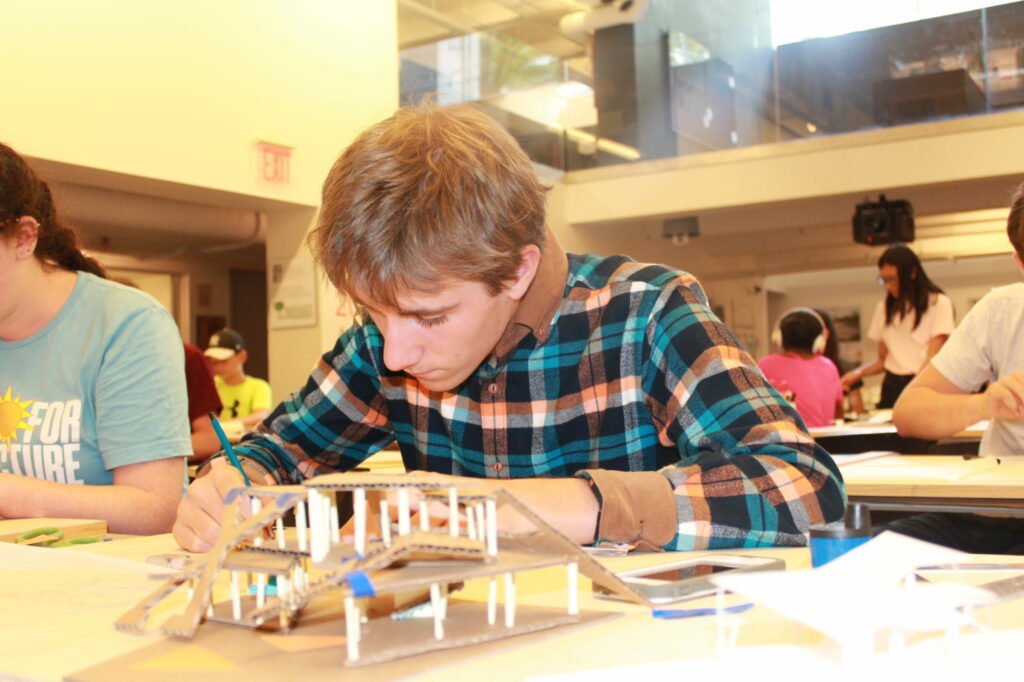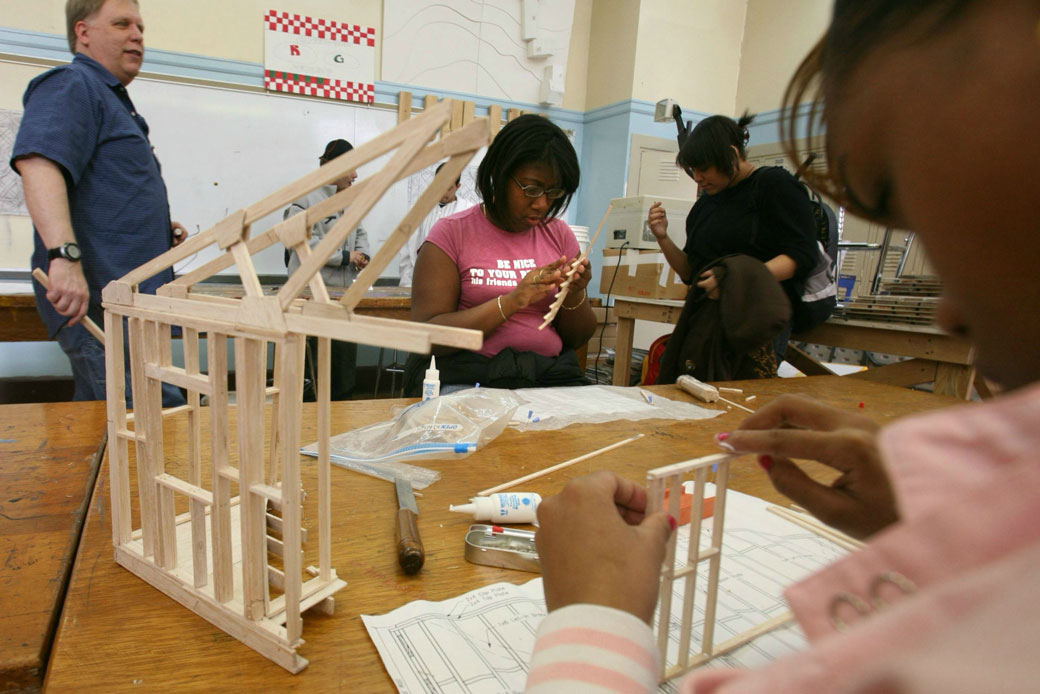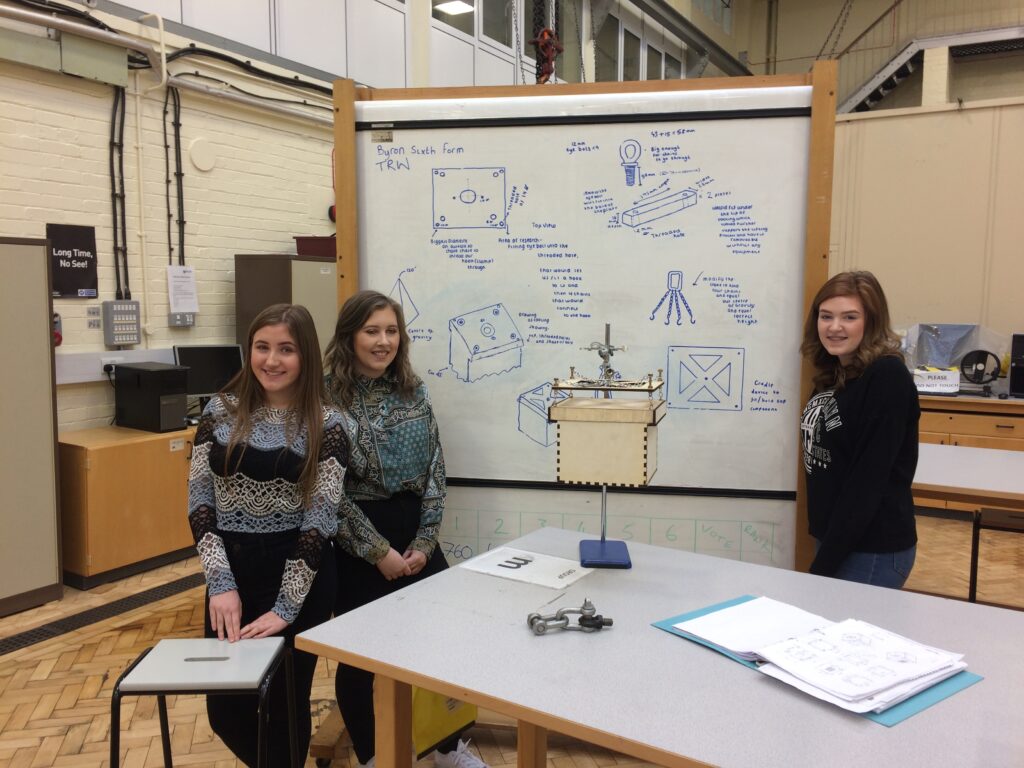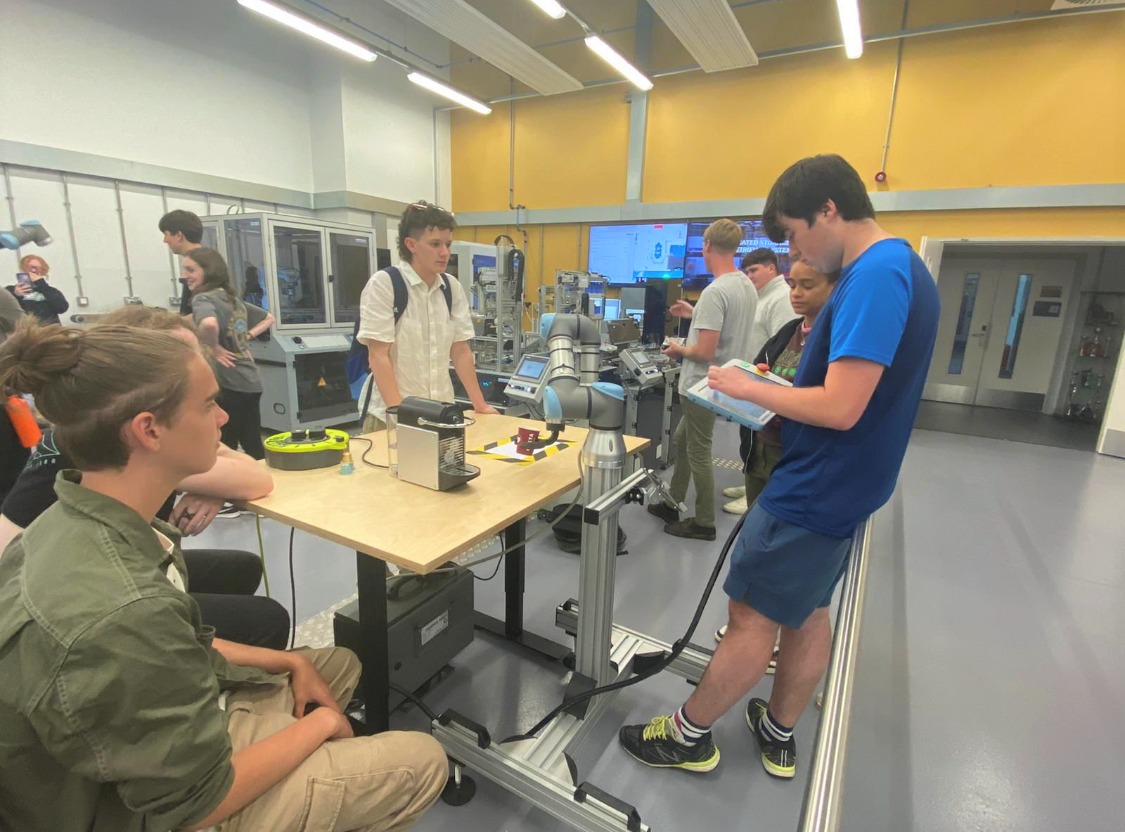Trish Millines Dziko is helping kids at Washington Middle School in Seattle prepare for their big STEM expo as the school year comes to a close. It’s a thrilling conclusion of their efforts. However, it is also bittersweet.
Washington Middle School partnered with the Technology Access Foundation (TAF), an education foundation run by Millines Dziko, three years ago and began implementing TAF’s curriculum at the racially and economically diverse school.
Seattle Public Schools declared this spring that it could no longer finance the program due to budget constraints. The STEM expo in June could be the school’s last.
“That’s what makes it frustrating — that money got in the way — because there was a lot of progress being made by both teachers and students,” Millines Dziko told GeekWire.
TAF provides an equity-focused STEM program that emphasizes critical thinking and project-based learning. It integrates technology into all subject areas and connects students with tech-related companies. The Seattle nonprofit’s fundamental mission is to create inclusive, supportive classrooms with a focus on establishing relationships between instructors and children.
The partnership’s dissolution after only three years demonstrates the difficulty of implementing innovative programs in public schools with limited funds and student populations with diverse needs. It begs the question of what feasible alternatives exist, as well as how to pick up the pieces when an attempt fails.

“We appreciate our TAF partners,” the district responded via email. “They have been understanding and are working hard to meet our current budget constraints.” We’ll keep working with TAF to figure out the next steps.”
TAF has left the Seattle middle school, but its work continues elsewhere in the region:
TAF has co-managed a sixth- through twelfth-grade school with Federal Way Public Schools since 2008. TAF@Saghalie began as the 300-student TAF Academy and joined with an existing school in 2017, roughly doubling in size.
TAF offers a less rigorous methodology called STEMbyTAF School Transformation. Six public schools from three districts south of Seattle are taking part in the program, which offers TAF coaching.
TAF provides numerous chances for professional development for instructors. It also offers assistance to teachers of color and anti-racist leadership.

Margit McGuire, former director and professor of teacher education at Seattle University, stated the university has sent master’s degree students to teach in TAF schools. She was “heartbroken” when she found that TAF was leaving Washington Middle School.
“The sad part for Seattle is that it could be a model for other schools,” McGuire added. “It’s such a missed opportunity.”
TAF’s route
Millines Dziko spent 15 years as a developer, designer, and manager at Microsoft and other digital businesses before founding TAF. TAF started as an after-school tech internship program in a racially diverse community near Washington Middle School in 1996.
Millines Dziko and others with TAF observed the need for more support for underprivileged kids over time, which inspired the concept of bringing TAF into public schools itself.

It’s a difficult task. Budgets for public schools might be tight. According to state data, Washington Middle School receives approximately $20,000 per pupil. Private, non-parochial middle schools in Seattle charge more than $40,000 per year in tuition and serve students with less scholastic problems.
It is also difficult to assess progress in programs based on project-based learning rather than standardized assessments.
TAF@Saghalie has a high school graduation rate of more than 91%, with 80% of pupils classified as low income and approximately one-quarter whose native language is not English. However, its 2022 exam results were disappointing: only 16% of eighth-grade students fulfilled math criteria, while 27% of tenth-grade students did.
At Tacoma’s Boze Elementary School, a TAF transformation school since 2015, only 15% of fifth-grade children exceeded math standards last year, despite the fact that before the pandemic, the rate was double that (schools statewide reported plummeting scores last year due to COVID). Sixty percent of Boze students are low-income, and 15% are homeless.
Millines Dziko, an education expert, disputes that school test scores are a poor indication of accomplishment. Opponents of testing claim that tests are snapshots in time that only assess what a student is capable of and knows.
“We’re really preparing kids to evolve into the adults that every single company, every single [venture capitalist] says they want,” TAF’s Millines Dziko explained. “We’re creating whole people.” Not only exam takers.”
With the TAF relationship at Washington Middle School cut short and disrupted for one year by COVID, it’s difficult to assess its impact on kids or speculate on how it could have played out over time.
Brynne Veitengruber, co-president of the Washington Middle School PTSA and mother of an eighth student, said she loved the community events arranged by TAF and is thankful for the additional staff and high-quality teachers that arrived with the program. She did, however, mention some hiccups in the launch, particularly in the delivery of arithmetic teaching.
Having said that, she is concerned about losing the resources. TAF’s departure was also bemoaned by other parents.
“I’m concerned about next year without a TAF,” she remarked. “It’s hard [even] with the extra help,” says one student at Washington Middle School.
Costs and complications
So, what happened at Washington Middle School?

Before TAF arrived, the situation was difficult. The middle school historically offered a program aimed at highly skilled children from all around south Seattle, while also serving students from surrounding, academically underperforming elementary schools.
Meanwhile, Seattle Public Schools was reorganizing its program for highly bright students across the district in order to make it more racially and socioeconomically equitable. Some parents, already anxious about the changes, questioned whether TAF would meet their children’s requirements.
Administrative challenges also hampered the initiative. According to Washington Middle School parents, while the agreement was organized as a collaboration, there was evidence that certain public school authorities did not embrace the TAF partnership. To families, it was unclear who was responsible for overseeing the arrangement.
Then there were the financial concerns. The initial joint operating agreement between TAF and Seattle Public Schools indicated that increasing employee levels to meet TAF’s strategy would cost the district an additional $1.1 million over three years. During that time, the group intended to spend $1.8 million of its own money.
According to public documents, the district spent closer to $3 million, while TAF invested $1.9 million.
Budget cuts are threatening several schools across the state.
“Money is scarce. The program was highly supported by the district, making it unsustainable in Seattle,” says Cliff Meyer, co-president of the Washington Middle School PTSA from 2018 to 2020.

The school is making further cuts in addition to TAF’s departure. This includes laying off a music teacher, which will almost certainly result in the school’s famed jazz band and intermediate orchestra class being eliminated – a move that families have vocally opposed.
“It doesn’t escape us that it’s expensive,” Millines Dziko said of TAF’s strategy. “The challenge for us is that we have always tried to do public education on the cheap and expected different results.”
‘We lack the political will.’
TAF’s current goal is to increase the number of transformation partner schools, which are much less expensive than the co-managed school model, according to previous TAF studies.
“As a society, we are unwilling to invest in schools that truly make a difference.”
- Margit McGuire, Seattle University professor
The organization currently works with six transformation schools and hopes to add three more per year. It set a goal of reaching 60 schools in 20 years a few years ago, which it will not achieve. According to Millines Dziko, the process is slow and needs initial connection development with districts and teachers.
The group has no plans to work with Seattle Public Schools in the future.
Meanwhile, the task of public schools appears to be becoming increasingly difficult. Students are dealing with potential mental health damage from social media, the legacy of disruption from COVID, political, economic, and climate worry, and a persistent concentration on standardized examinations, which can stifle innovative educational solutions.
TAF received the Geeks Give Back award at the GeekWire Awards in 2018 for its work.
McGuire of Seattle University believes the TAF model has promise if it receives the necessary funding.
“The incredibly sad part is that we as a society are unwilling to invest in schools that truly make a difference,” she remarked. “We don’t have the political will to do that.”
Download The Radiant App To Start Watching!
Web: Watch Now
LGTV™: Download
ROKU™: Download
XBox™: Download
Samsung TV™: Download
Amazon Fire TV™: Download
Android TV™: Download

